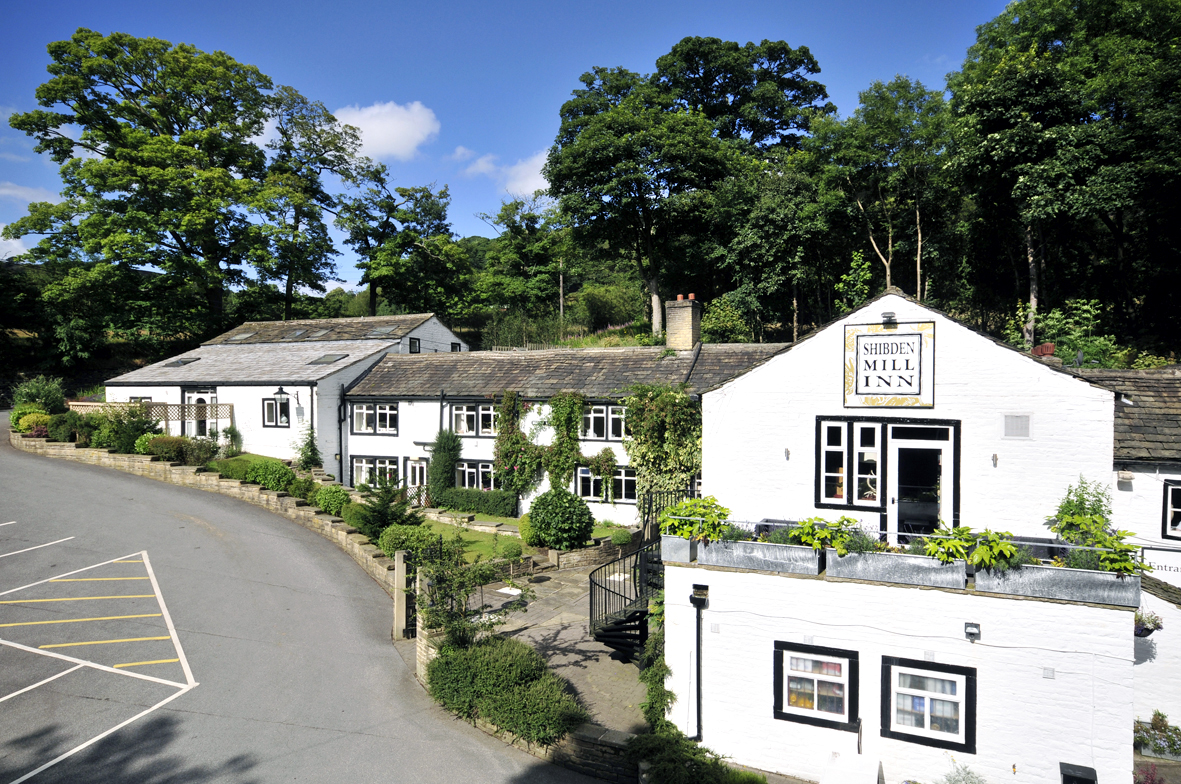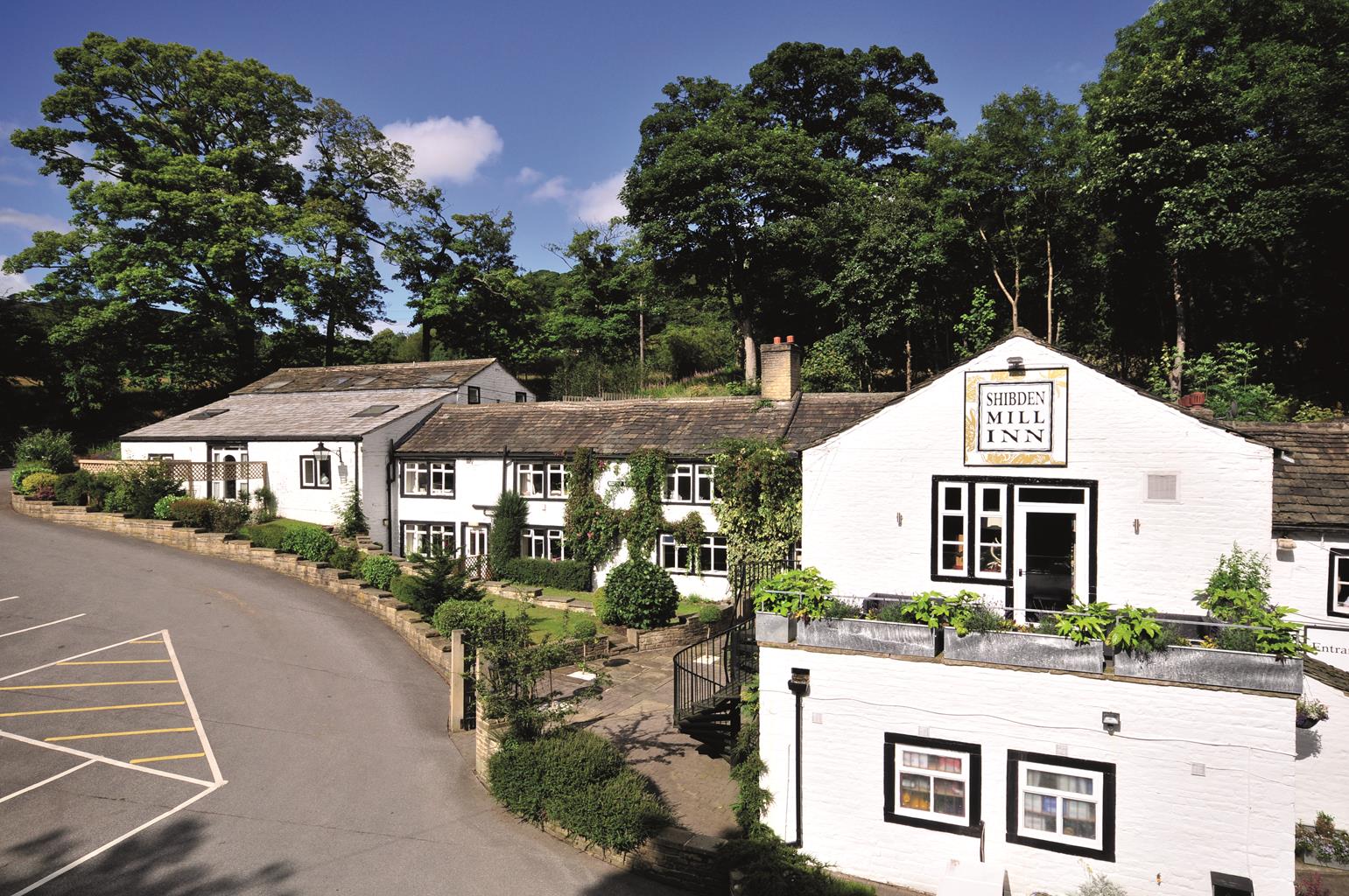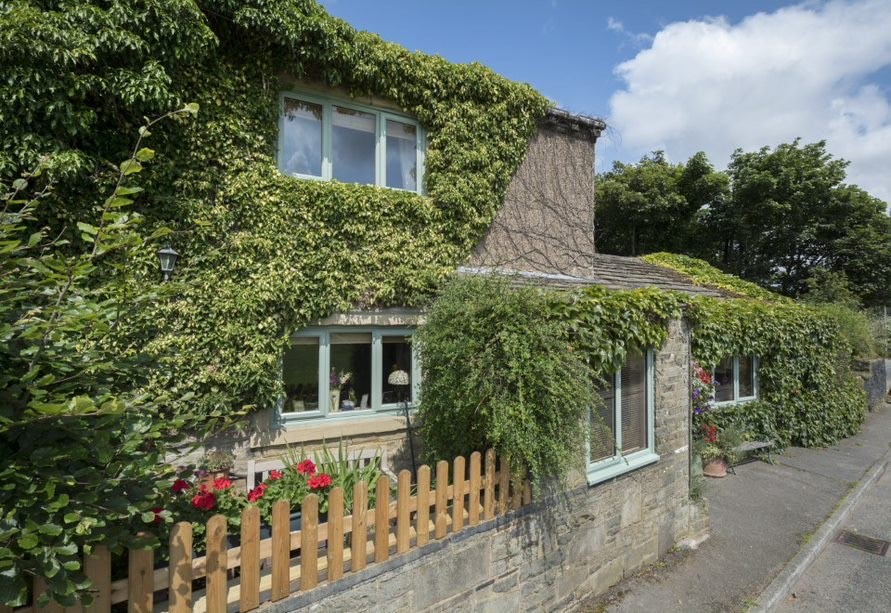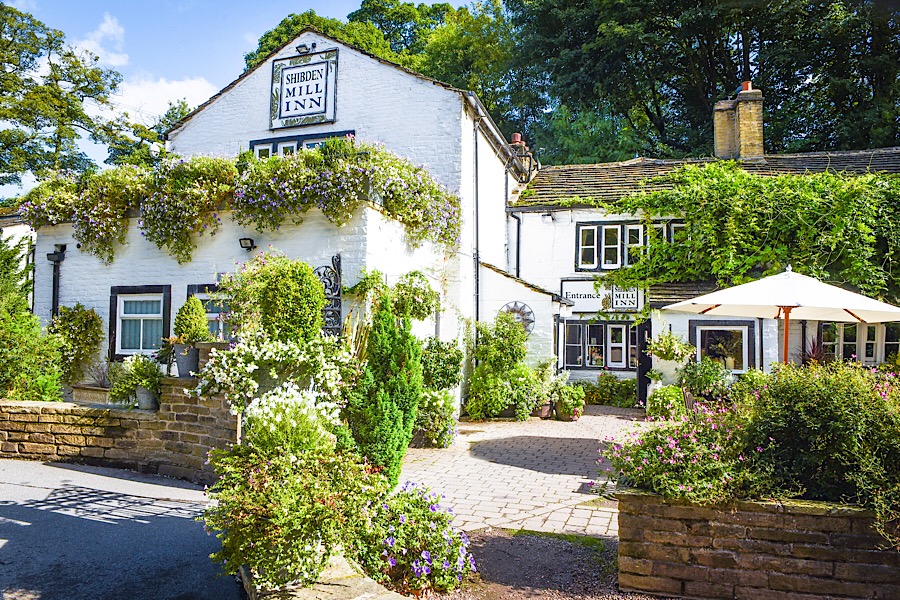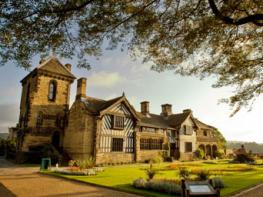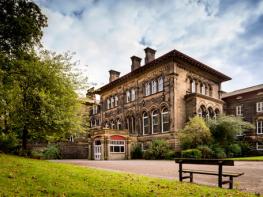At 1000 ft above sea level, offering a unique position set in a rural vista yet only 5 minutes’…
Halifax and the Shibden Valley

An old packhorse track, a superb half-timbered hall and a hidden valley – all just a short walk from Halifax.
5 miles (8kms)
About the walk
Set among the Pennine hills, Halifax was a town in the vanguard of the Industrial Revolution. Its splendid civic buildings and huge mills are an indication of the town's prosperity, won from the woollen trade. Ironically, the most splendid building of all came close to being demolished. The Piece Hall, built in 1779, predates the industrial era. Here, in a total of 315 rooms on three colonnaded floors, the hand weavers of the district would offer their wares (known as 'pieces') for sale to cloth merchants. The colonnades surround a massive square. This is a building that would not look out of place in Renaissance Italy.
The mechanisation of the weaving process left the Piece Hall largely redundant. In the intervening years it has served a variety of purposes, including as a venue for political oration and as a wholesale market. During the 1970s, having narrowly escaped the wrecking ball, it was spruced up and given a new lease of life. It now houses a visitor centre, art gallery and speciality shops and hosts a programme of events throughout the year.
The Magna Via
The cobbled thoroughfare up Beacon Hill is known as the Magna Via. Until 1741, when a turnpike road was built, this was the only possible approach to Halifax from the east, for both foot and packhorse traffic. Also known as Wakefield Gate, the Magna Via linked up with the Long Causeway, the old high level road to Burnley. That intrepid 18th-century traveller, Daniel Defoe, was one of those who struggled up this hill. 'We quitted Halifax not without some astonishment at its situation, being so surrounded with hills, and those so high as makes the coming in and going out of it exceedingly troublesome'. The route was superseded in the 1820s by the turnpike constructed through Godley Cutting. Today the Magna Via, too steep for modern motor vehicles, remains a fascinating relic of the past.
Shibden Hall
Situated on a hill above Halifax, this magnificent half-timbered house is set in 90 acres (36ha) of beautiful, rolling parkland. Dating from 1420, the hall has been owned by prominent local families – the Oates, Saviles, Waterhouses and, latterly, the Listers. All these families left their mark on the fabric of the house, but the core of the original house remains intact. The rooms are furnished in period style, to show how they might have looked over almost six centuries. The oak furniture and panelling have that patina of age that antique forgers try in vain to emulate. Barns and other outbuildings have been converted into a folk museum, with displays of old vehicles, tools and farm machinery.
Shiden Hall was home to landowner and diarist Anne Lister, who’s life is explored in the BBC drama Gentleman Jack.
Walk directions
Begin opposite the tall spire that once belonged to Square Church, walking down Alfred Street East and left along Church Street, passing the smoke blackened parish church. Bear left again into Lower Kirkgate, then right along Bank Bottom. Cross Hebble Brook and walk uphill; where the road bears sharp left, keep straight ahead up a steep cobbled lane, the Magna Via. Meeting a road at the top, go right for about 200yds (183m). Just after the entrance to a warehouse (Aquaspersion), take a cobbled path on the left that makes a steep ascent up Beacon Hill.
Keep with the main trail, which, higher up, curves left over the shoulder of the hill and runs beneath a high buttress wall to a kissing gate and barrier. Walk forward along a broad cinder track, taking the left fork a little further on where views open across the surprisingly rural Shibden Valley. After a further 100yds (91m), take a walled path on the left. Drop steeply to a small housing estate and turn right out to the main road. Almost opposite, beside a farm entrance, a path continues downhill, passing beneath the railway line into Shibden Park.
Walk forward to the lake and bear left past the boathouse up to a junction with the main drive. Go left and then left again in front of a pool onto a track that climbs beside the wooded railway embankment. Reaching another pool, the house and gardens are to the left, otherwise, branch right towards the car park. At the next junction, drop right past a display of traditional walling, descending through trees to a drive. Climb left to the park entrance and turn right down Old Godley Lane. It finally swings left up to the main road at Stump Cross.
Cross over the road and take Staups Lane, to the left of the Stump Cross Inn. Walk along the lane, which soon becomes cobbled, to meet another road at the top. Go left and immediately left again down a drive, which, through a gate, continues across the fields into Shibden Dale. Emerging at the far end on to a lane, turn left down to the Shibden Mill Inn.
Swing left past the pub, leaving the far end of the car park on a track across Shibden Brook. At a fork, bear right, later passing an isolated house. Beyond, a narrower path winds up to Claremount. Keep ahead along a street that ultimately bends right above Godley Cutting. At the end, go left over a bridge spanning the main road and then immediately descend steps on the right to a street below. Go left to its end and then right to retrace your outward route into Halifax.
Additional information
Old packhorse tracks and field paths
Surprisingly rural, considering the proximity to Halifax
Keep on lead crossing busy roads
OS Explorer 288 Bradford & Huddersfield
Choice of pay-and-display car parks in Halifax
At Shibden Park
WALKING IN SAFETY
Read our tips to look after yourself and the environment when following this walk.
Find out more
Also in the area
About the area
Discover West Yorkshire
Everybody knows that Yorkshire has some special landscapes. The Dales and the Moors first spring to mind, but what about West Yorkshire? That’s Leeds and Bradford isn’t it? Back-to-back houses and blackened mills… Certainly if you had stood on any of the hills surrounding Hebden Bridge a hundred years ago, and gazed down into the valley, all you would have seen was the pall of smoke issuing from the chimneys of 33 textile mills. But thankfully, life changes very quickly in West Yorkshire. The textile trade went into terminal decline, the mills shut down forever and in a single generation Hebden Bridge became a place that people want to visit.
The surrounding countryside offers walking every bit as good as the more celebrated Yorkshire Dales; within minutes you can be tramping across the moors. And this close proximity of town and country is repeated all across West Yorkshire. There’s such diversity in the area that you can find yourself in quite unfamiliar surroundings, even close to places you may know very well. Take time to explore this rich county and you will be thrilled at what you find to shatter old myths and preconceptions.
Nearby stays
Restaurants and Pubs
Nearby experiences
Recommended things to do
Why choose Rated Trips?
Your trusted guide to rated places across the UK
The best coverage
Discover more than 15,000 professionally rated places to stay, eat and visit from across the UK and Ireland.
Quality assured
Choose a place to stay safe in the knowledge that it has been expertly assessed by trained assessors.
Plan your next trip
Search by location or the type of place you're visiting to find your next ideal holiday experience.
Travel inspiration
Read our articles, city guides and recommended things to do for inspiration. We're here to help you explore the UK.

